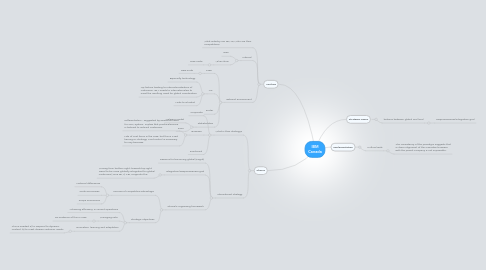
1. Choice
1.1. What is their strategy?
1.1.1. Corporate
1.1.2. Business
1.1.2.1. Differentiation - suggested by existance/need for CRM system. Implies that produce/service is tailored to indivual customers.
1.1.2.2. Lots of cost focus in the case, but this is a red herring re: strategy. Cost control is necessary for any business.
1.1.3. Functional
1.2. International strategy
1.2.1. Reasons for becoming global (Kogut)
1.2.2. Integration/Responsiveness grid
1.2.2.1. Moving from bottom right, towards top right. Need to be more globally integrated for global customers ('One IBM') CRM supports this
1.2.3. Ghosal's organising framework
1.2.3.1. Sources of competitive advantage:
1.2.3.1.1. National differences
1.2.3.1.2. Scale economies
1.2.3.1.3. Scope economies
1.2.3.2. Strategic objectives
1.2.3.2.1. Achieving efficiency in current operations
1.2.3.2.2. Managing risks
1.2.3.2.3. Innovation, learning and adaptation
2. Analysis
2.1. What industry are IBM in? Who are their competitors?
2.2. Internal
2.2.1. R&C
2.2.2. Value chain
2.2.2.1. New node
2.3. External environment
2.3.1. STEP
2.3.1.1. New node
2.3.2. YIP
2.3.2.1. Especially technology
2.3.2.2. Yip factors leading to internationalisation of customers. IBM needs to internationalise to meet the resulting need for global coordination
2.3.2.3. Links to Ghoshal
2.3.3. Porter
2.3.4. Stakeholders
2.3.4.1. Saliency model
2.3.4.2. KSFs
3. Implementation
3.1. Cultural web
3.1.1. The consistency of the paradigm suggests that a closer alignment of the Canadian business with the parent company is not impossible.
4. Strategic issues
4.1. balance between global and local
4.1.1. Responsiveness/integration grid
